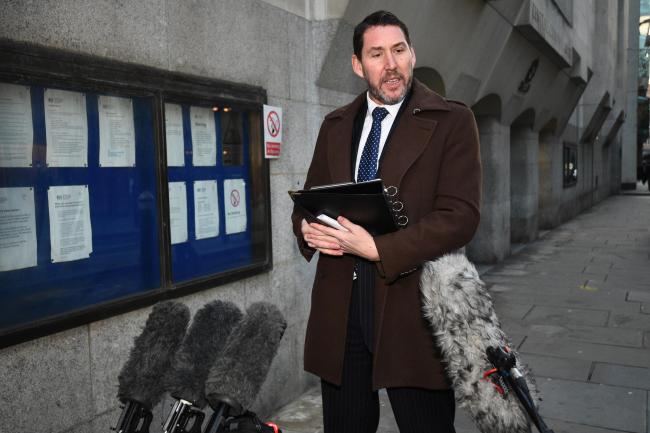THE detective who led the investigation into the Babes in the Wood murders said the science in the case kept pointing to Russell Bishop as the murderer.
In November 2013, Detective Superintendent Jeff Riley was appointed as the senior investigating officer (SIO) into the murder of Karen Hadaway and Nicola Fellows in Wild Park in October 1986.
Following this week’s guilty verdict he spoke to The Argus about his work building the case and bringing the killer to justice.
Science
Superintendent Riley said he was at college at the time of the murders. He joined the police in 1990, and was well aware of the “dreadful” unresolved case.
He said: “The key moment for the reinvestigation was the DNA hit that we received in 2013.
“We have always followed the science. The review in 2012 gave us a DNA profile that we could then work with. We then had a focus on Bishop, but we have always kept an open mind in this investigation.
“Where other names have come into the inquiry back in 1986 or subsequently, we have always looked at those, but the science kept coming back to Russell Bishop.”
The defence team for Bishop had tried to point the finger of blame at Nicola Fellows’ father Barrie and claimed the police and Crown Prosecution Service had spent decades building a case against the wrong man.
But Mr Riley said: “By the time we got to the end of the inquiry the science got stronger, and stronger, and stronger.
“The families have waited 32 years for justice. Any murder has a massive impact on the victim’s family and the community.
“But the murder of children particularly, has an impact, and I think it has been a shadow over Moulsecoomb that lasts to this day.”
Previously, he was a detective on the case of Sarah Payne, eight, who was killed by Roy Whiting after he snatched her from a field in Kingston Gorse near Worthing in 2000.
There was criticism of the way the police handled the Babes in the Wood inquiry in 1986 and 1987, as Bishop was acquitted by a jury at Lewes Crown Court.
The retrial at the Old Bailey was told that tensions were so high at the original trial that a police detective pinned science expert Dr Anthony Peabody to a wall after he had given evidence.
But Mr Riley said the first investigation presented a strong case. He said: “I think everybody who has looked at the science that was available to us at the time is astounded that Bishop was not convicted in 1987.
“It was a strong investigation, as to why he was found not guilty, that’s really something that will remain within the jury room.
“It was a strong case with strong forensic evidence at the time.”
Since that case, there have been reviews into the evidence, and the law on double jeopardy changed in 2005 which allowed police to try Bishop again if there was compelling and reliable new evidence.
But police had to decide not to pursue the case in 200, because they did not believe they had enough new evidence.
Mr Riley said: “It was not a decision that was taken lightly. I’m sure the SIO at the time and those who finally made the decision agonised over it, because it was so impactive on the families and the community.

“But we get one opportunity under double jeopardy legislation.
“If we had taken it to the Court of Appeal and failed at that stage, that would have been it.”
It was a tough blow for the families, who wanted justice, and Mr Riley said he has had to work hard to earn their trust over the past five years.
Mr Riley said: “I met the families shortly after I set up the investigation team in 2013, I explained to them that we had a scientific breakthrough.
“I took them into my confidence and told them I would give them updates as the investigation progress, but that it would be a marathon, not a sprint.
Closure
“I look back now and I’m proud of the work my team has done.
“Having met the family, all they wanted was another hearing, a trial for Bishop.
“They want justice to happen. The fact we are at The Old Bailey with this hearing will go some way to giving them some closure.
“How you get closure after 32 years I don’t know.
“Often the trial process is a way for families to start the grieving process and in this case the families haven’t been able to do that.
“It’s hung like a massive shadow over them for 32 years, now I hope they can start on that road to closure.”
Detectives Gary Pattison and Richard Slaughter conducted the interview of Russell Bishop at Durham Police Station in May 2016.
Bishop answered “no comment” to most of the questions put to him. In a statement he told the detectives: “I was tried for these offences in 1987 and found not guilty by a jury after only two hours deliberation.” After an afternoon and evening of questioning, he told them: “This case has nothing to do with me, nothing to do with me whatsoever.
“I cleared my name, by jury of my peers and you come in here saying there’s new evidence, there’s no new evidence, it’s all been before the jury, all these tapings of this that and the other, it’s all been before the jury.
“All the hairs, been before the jury, it’s not new, unless it’s been planted and I hope that’s not the case.
“But I’m telling you now, there is no case to answer, I’m sorry, I want the case solved but you’re looking in the wrong place. Now I’ve got no comment to make, please. Please bring this to a close.”
Mr Riley said Bishop would not have known where he was going when he was told to gather his belongings for prison transport before the interview, and would have left the van to be greeted by Detective Pattison and Slaughter.
He said: “They explained they were there to talk about the murders of Karen and Nicola.
“Then it will have dawned on him that something he put behind him years ago and thought would never come back to darken his door again, he was confronted with.
“He clearly didn’t want to be there. He wanted to go back to prison, and made that very clear to custody staff at Durham.”







Comments: Our rules
We want our comments to be a lively and valuable part of our community - a place where readers can debate and engage with the most important local issues. The ability to comment on our stories is a privilege, not a right, however, and that privilege may be withdrawn if it is abused or misused.
Please report any comments that break our rules.
Read the rules hereLast Updated:
Report this comment Cancel